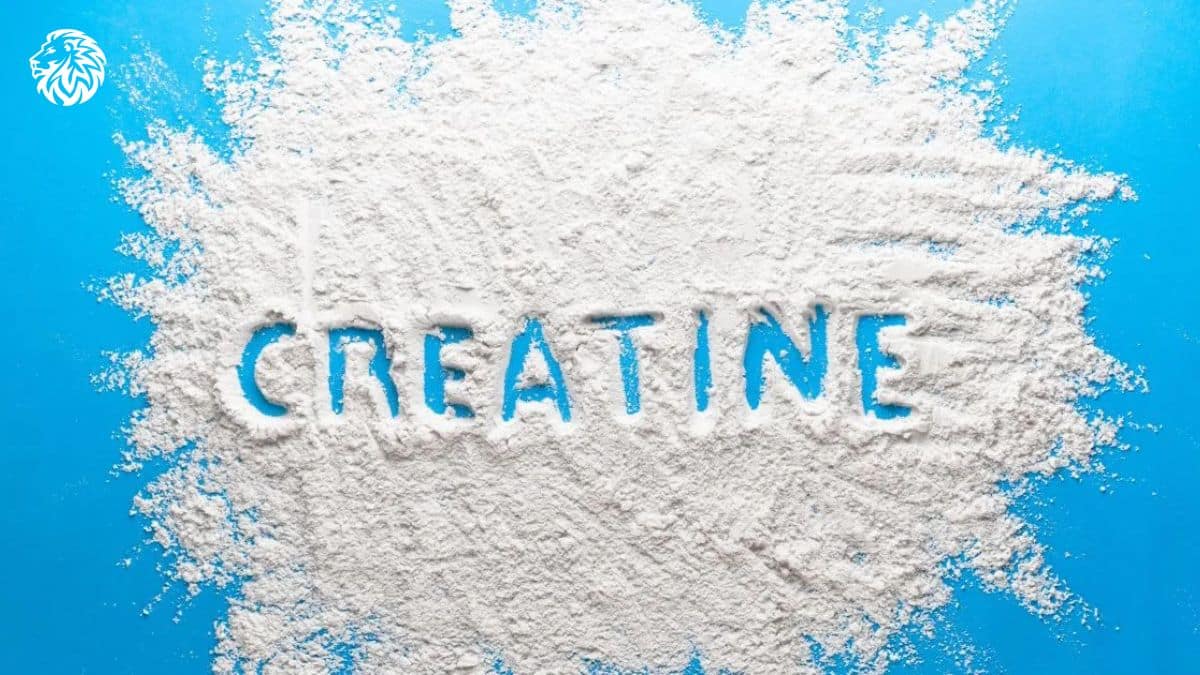Understanding Creatine
What is Creatine?
Creatine’s got one main job: giving your muscles a power boost. It’s a chemical that helps with energy production in your cells, especially in those muscles of yours. The magic sauce here is called ATP – the stuff your cells rely on for energy. Your body churns out creatine from amino acids like L-arginine, glycine, and L-methionine. A whopping 95% of it hangs out in your skeletal muscles (Medical News Today). Curious how this energy booster works its wonders? Check out our article on how does creatine work.
Sources of Creatine
Whether you’re munching on some steak or popping a supplement, creatine’s got you covered. Here’s the scoop on where you can snag some creatine:
Dietary Sources:
- Red Meat: Chow down on some beef or pork for a creatine kick.
- Fish: Go for herring, salmon, or tuna if you’re fishing for creatine.
Supplemental Sources:
- Creatine Monohydrate: This one’s the big kahuna in the creatine world, tried and true.
- Creatine Ethyl Ester: Folks say it absorbs like a charm.
- Buffered Creatine: Easy on the stomach with a little extra something to calm the tummy.
- Liquid Creatine: Comes in liquid fashion, but watch out – it might not sit on the shelf very long.
| Source Type | Example | Creatine Content (g) |
|---|---|---|
| Red Meat | Beef (100g) | 0.4 – 0.5 |
| Fish | Herring (100g) | 0.7 – 1.0 |
| Creatine Supplement | Creatine Monohydrate (5g) | 5 |
Once you’re loaded up on creatine, your body’s ready to tackle its energy demands and take your workouts up a notch. Before sprinkling it into your routine, though, get your doc’s take on it – especially if you’re dealing with health quirks or on some meds. Check out creatine dosage recommendations to get the lowdown on using it right.
Safety of Creatine Supplements
You’re tuning into the lowdown on creatine supplements. Are they safe? This bit explores creatine’s safety features and its possible side effects, helping you make smart choices.
General Safety of Creatine
Creatine gets a lot of attention in the supplement world, and there’s a heap of research behind it. When you stick to what’s recommended, it’s generally safe and sound. Some studies have backed this up by showing that using creatine for up to six months is usually harmless. You don’t need to worry about it messing with your kidneys, muscles, or body’s heat regulation.
Potential Side Effects
While creatine usually plays nice, it can throw a few curveballs if you’re not careful. Here’s what you should know:
- Kidney Concerns: Going overboard with creatine isn’t the best idea. One guy ended up with a kidney issue after taking more than 10 grams daily for six weeks. So, keep an eye on the dosage.
- Natural Production Slump: Load up too much, and your body might decide to snooze on its own creatine production (Mount Sinai Health Library).
- Health Conditions Note: If you’ve got kidney issues, high blood pressure, or liver disease, it might be smart to steer clear of creatine.
- Heart and Skin Surprises: Some say creatine might cause an irregular heartbeat or a skin situation called purpuric dermatosis, but this is still being looked into (Mount Sinai Health Library).
Potential Side Effects of Creatine
| Side Effect | High Risk Conditions | More Info |
|---|---|---|
| Kidney Damage | High doses (>10g daily) | Mount Sinai Health Library |
| Inhibition of Natural Production | High doses | Mount Sinai Health Library |
| Irregular Heartbeat | Specific individual reactions | Mount Sinai Health Library |
| Purpuric Dermatosis | Specific individual reactions | Mount Sinai Health Library |
Knowing these potential hiccups is key if creatine’s on your shopping list. Dive deeper into creatine side effects and check out our go-to guides on creatine dosage recommendations and creatine loading phase to use it safely.
Risks and Concerns
High Doses and Kidney Damage
Alright, let’s have a chat about creatine. It’s one of those things that’s great when used right, but you’ve got to keep an eye on how much you’re taking. Stay within the recommended limits and you’re usually in safe territory. However, things can go sideways if you go overboard, like athletes who consumed more than 10 grams a day for six weeks and ended up with rhabdomyolysis or even unexpected kidney failure.
Here’s a quick look in the table below:
| Dosage (grams/day) | Potential Side Effects |
|---|---|
| 3-5 | Practically safe |
| 5-10 | Generally okay, but might get a tummy ache |
| >10 | Watch out for kidney trouble and muscle breakdown |
Not to mention, taking too much could slow down your body’s own creatine production over time, which isn’t ideal. Swing by creatine dosage recommendations for a more personalized dosing plan.
Interactions with Medications
Let’s not forget that creatine and meds can sometimes butt heads. It’s like mixing oil and water, and can stir up issues, messing with existing conditions or the effectiveness of treatments.
| Medication | Potential Interaction |
|---|---|
| NSAIDs (like ibuprofen) | Heightened chance of kidney troubles |
| Diuretics | Could lead to dehydration and mess with your electrolytes |
| Caffeine | Might make creatine less effective |
People dealing with kidney disease, high blood pressure, or liver problems should approach creatine with caution, as it might make those situations worse (Mount Sinai). If you’re in this boat, chatting with a healthcare professional is a smart move before jumping into creatine. For deeper insights on how creatine affects various health statuses, check out our section on health conditions and creatine.
By staying informed about the potential risks and knowing what you’re getting into, you can use creatine wisely and keep your health in check. Dive into how it all works with our piece on how creatine works and explore its possible perks in our other sections.
Health Conditions and Creatine
Kidney Disease, High Blood Pressure, and Liver Disease
Alright, let’s talk creatine and those health hurdles. If you’ve got some existing issues with your kidneys, liver, or waging a battle against high blood pressure, you might want to steer clear of creatine. The good folks over at Mount Sinai Health Library warn it’s not the best sidekick for you, as it could put extra pressure on your already-struggling organs.
Take this story for example: One athlete, maybe a little too keen on bulking up, swallowed more than 10 grams of creatine every day for six weeks. His reward? Rhabdomyolysis and sudden kidney failure (Mount Sinai Health Library). Not exactly the trophy he was looking for. The moral? Stick within the limits and chat with your doc if you’ve got health issues lurking.
| Health Condition | Potential Risk with Creatine |
|---|---|
| Kidney Disease | Extra burden leading to possible kidney failure |
| High Blood Pressure | Could pump up the blood pressure |
| Liver Disease | Might worsen liver struggles |
Irregular Heartbeat and Skin Conditions
Creatine isn’t just flexing its muscles; it might be playing games with your heart and skin too. Some doctors think it could lead to rhythm issues in your ticker or certain skin conditions. Ever heard of purpuric dermatosis? It’s not pleasant – think small purple spots popping up due to tiny blood leaks under the skin (Mount Sinai Health Library).
And if you’re popping other pills, be warned. Creatine can throw a wrench into how your body deals with stuff like NSAIDs, caffeine, water pills, and cimetidine, upping the risk for kidney drama or leaving you parched.
Before you jump into a creatine habit, a chat with your doctor couldn’t hurt. They’ll dish out advice tailored to your health status and medications. Swing by our consultation with a doctor section for more intel.
| Potential Side Effects | Description |
|---|---|
| Irregular Heartbeat | Heart not keeping a steady rhythm |
| Purpuric Dermatosis | Purple spots due to skin bleedings |
So, if you’re championing health conditions and contemplating adding creatine to your routine, make sure to have a word with your healthcare advisor. Want more on picking the right supplements and using them smartly? Check out our insights on benefits of creatine and creatine monohydrate benefits.
Usage and Recommendations
Recommended Dosages
Creatine is like the trusty sidekick you never knew you needed. It’s been poked and prodded by researchers and generally gets a thumbs-up for safety when you stick to the right amounts. Nailing the dosage ensures you can get the perks without running into any unwanted surprises.
When you’re starting a creatine regimen, you typically follow these stages:
- Loading Phase: This is where you go big for a short time. Take 20 grams a day—split that into four handy 5-gram servings—with this routine spanning 5 to 7 days. It’s your fast track to pumping up those creatine stores in muscles.
- Maintenance Phase: After revving things up, you switch gears to just 3-5 grams a day, a small price to pay to keep your body’s creatine levels in check.
| Stage | Amount |
|---|---|
| Loading Phase | 20 grams daily (5g x 4 doses) for 5-7 days |
| Maintenance Phase | 3-5 grams daily |
Following these guidelines not only gives a boost to high-powered activities under 30 seconds but also cranks up your strength training results (GSSI Sports Science Exchange). For deeper insights on dosage, check out our page on creatine dosage recommendations.
Consultation with a Doctor
Creatine might be your new gym buddy, but always chat with a doc before diving into supplement use, especially if you’re dealing with any health issues. Research typically shows creatine is well-tolerated for up to half a year at regular doses. Yet, there can be one-in-a-million scenarios where things go south—like when an athlete faced muscle damage and unexpected kidney trouble after overloading on more than 10 grams every day for six weeks (Mount Sinai Health Library).
| Time Frame | Amount | Observations |
|---|---|---|
| Up to 6 months | 3-5 grams/day | Generally safe |
| Beyond 6 weeks | Over 10 grams/day | Risk of serious issues observed |
There’s no substantial proof that sensible doses harm healthy folks, though cranking it way up could stress out your liver and kidneys (PubMed). For a closer look at how creatine mingles with different health issues, head over to our sections on Kidney Disease, High Blood Pressure, and Liver Disease and Irregular Heartbeat and Skin Conditions.
By sticking to these pointers and having a word with your healthcare pro, you can help your muscles say ‘hello’ to creatine’s benefits without saying ‘goodbye’ to well-being. Get the scoop on the benefits of creatine and what it can do for muscle growth and swole goals on your fitness path.
Benefits of Creatine
Athletic Performance
Creatine’s like the supercharger for athletes looking to crank up their energy and performance. It’s particularly handy for those quick bursts of activities under half a minute.
Here’s how athletes typically load up on creatine:
| Dosage Phase | Amount | Duration |
|---|---|---|
| Loading Phase | up to 20g daily | A Few Days |
| Maintenance Phase | 1 – 10g daily | Weeks to Months |
People using creatine often see their muscles grow, with little to no negative effects (PubMed). Big folks in heavy training might need 5 to 10g a day to keep their muscle “fuel” topped off. For more dosage advice, check out our tips on creatine dosage recommendations.
Muscle Recovery and Rehabilitation
Creatine’s not just about powering up—it’s got your back for recovery, too. Taking creatine for 8 to 16 weeks might boost your muscle strength and cut down tiredness in those with muscle issues (Medical News Today). It’s also being looked at for Parkinson’s, though results are still up in the air.
| Condition | Supplementation Period | Reported Benefits |
|---|---|---|
| Muscular Dystrophy | 8 to 16 weeks | Better Muscle Strength, Less Fatigue |
| Parkinson’s Disease | Varies | Possible Symptom Relief (not concrete) |
Creatine stands out for easing recovery from muscle damage after tough workouts. It helps lessen muscle damage, prevents joint and muscle injuries, even cuts down on dehydration and cramps. Plus, athletes might bounce back quicker from injuries with creatine in their corner. For tips on beefing up recovery, visit our piece on creatine for muscle growth.







